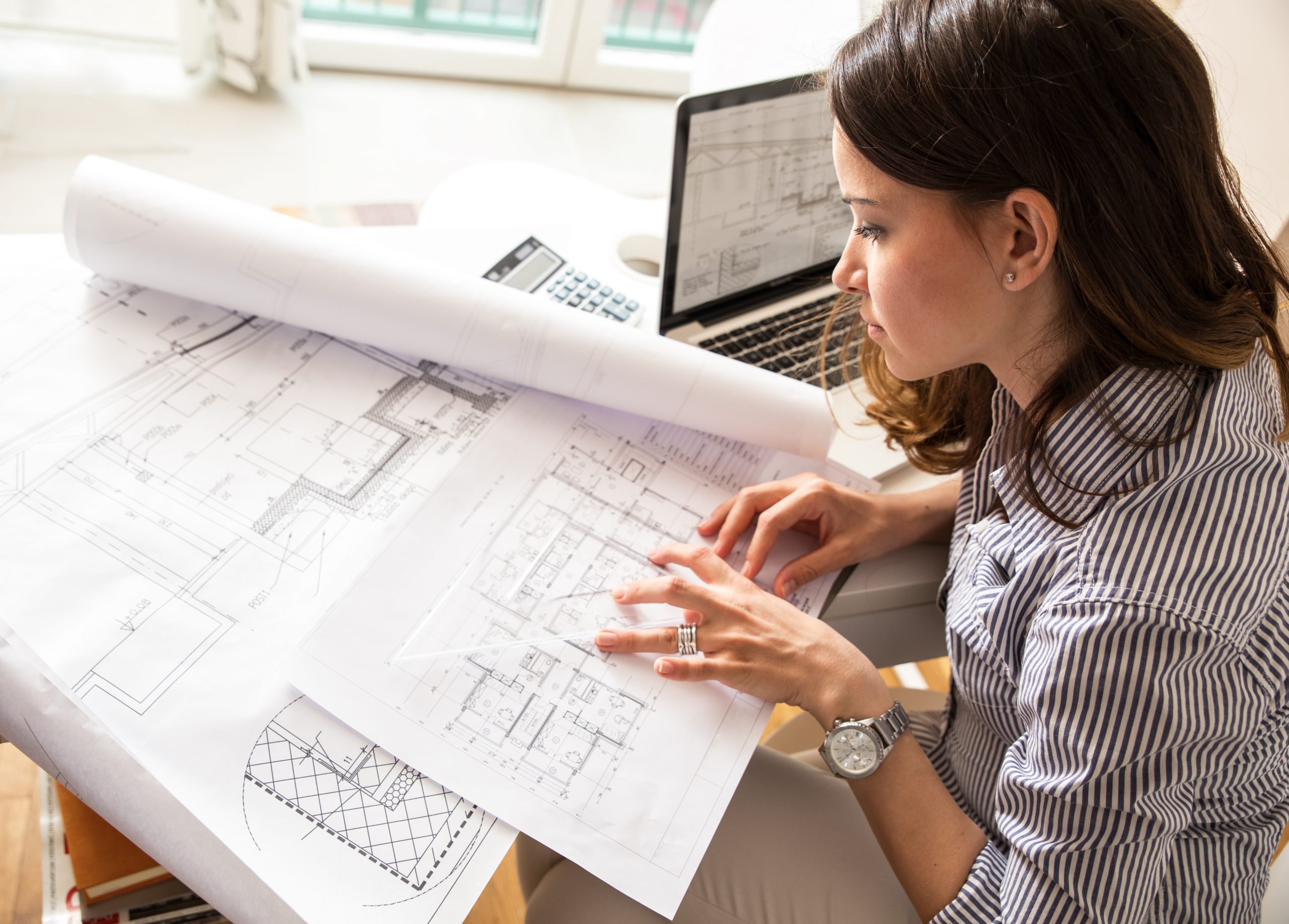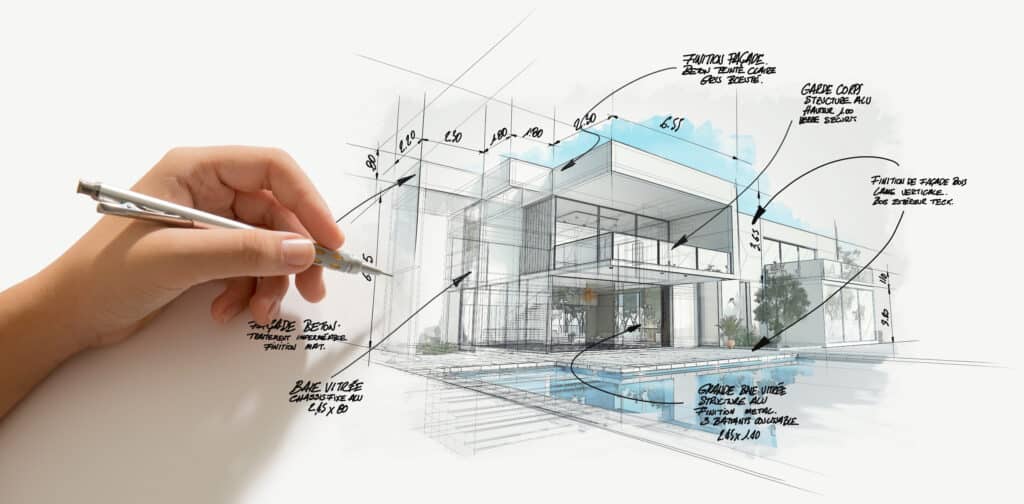Architect Recommended Software for 3D Modeling
Architect Recommended Software for 3D Modeling
Blog Article
Comprehending the Diverse Career Paths Available for Aspiring Architect
As an ambitious Architect, you have a world of job courses waiting for you. Whether you're drawn to traditional architecture or the subtleties of lasting design, there's a niche that straightens with your passions.
Conventional Architecture: Designing Buildings and Structures
Traditional design concentrates on developing buildings and frameworks that blend functionality with visual allure. As you discover this area, you'll appreciate the elaborate balance in between kind and objective. You'll learn to draw motivation from historical designs, including components like balance, materials, and craftsmanship. Your designs can reflect cultural heritage, showcasing local practices while fulfilling contemporary demands.
You'll develop skills in drafting, model-making, and website analysis, permitting you to envision and communicate your ideas efficiently. Involving with clients, you'll need to comprehend their vision and equate it right into feasible layouts.
Additionally, constructing codes and sustainability techniques are important in your work, ensuring your frameworks are risk-free and environmentally friendly. As you grow in your occupation, you'll discover chances in domestic, business, and even restoration jobs, each offering distinct obstacles. Accepting traditional style leads the method for a satisfying occupation that admires the past while forming the future.
Urban Preparation: Forming Areas and Public Spaces
As a hopeful Architect, you can play a necessary function as a metropolitan coordinator, changing how areas work and interact. By utilizing area interaction techniques, you'll assure that locals have a voice in shaping their environment. And also, incorporating lasting layout concepts will certainly aid produce areas that not only satisfy today's requirements yet additionally shield the future.
Role of Urban Planners
While lots of may assume of engineers as the sole dreamers behind buildings, city coordinators play a vital duty in shaping the broader landscape of neighborhoods and public areas. By working together with numerous stakeholders, you'll help develop parks, transport systems, and residential areas that promote social interaction and availability. Your knowledge in spatial design and neighborhood dynamics permits you to imagine future growth while preserving cultural heritage.
Community Engagement Methods
Effective neighborhood involvement methods are essential for urban planners to ensure that the voices of homeowners are listened to and valued in the preparation procedure. To foster purposeful discussion, you must prioritize open online forums and workshops where neighborhood participants can reveal their ideas and problems. By proactively integrating and listening feedback, you'll create rooms that mirror the area's requirements, inevitably leading to more sustainable and successful city atmospheres.
Lasting Design Concepts
When making metropolitan areas, including sustainable style concepts is crucial for developing atmospheres that thrive both environmentally and socially. Take into consideration integrating green areas, like gardens and parks, to enhance biodiversity and boost air high quality.
Creating with water conservation in mind is likewise essential-- think of rainfall gardens and absorptive surfaces to take care of stormwater. Including community members throughout the planning process guarantees that the rooms you produce meet their needs and urge social interaction. By accepting these concepts, you'll add to dynamic, sustainable city landscapes that benefit every person.

Landscape Style: Creating Lasting Outside Settings
As you check out landscape architecture, you'll uncover necessary style principles that develop attractive and practical outdoor spaces. Sustainable techniques play a crucial duty in making certain these atmospheres thrive while decreasing environmental influence. Plus, you'll discover a selection of profession possibilities that enable you to make a real distinction in just how people connect with nature.
Layout Principles in Landscape
Understanding style concepts in landscape architecture is crucial for creating lasting outside environments that integrate with nature. You'll require to ponder components like scale, balance, and proportion to guarantee your styles feel natural and inviting. Integrating native plants not just boosts biodiversity yet likewise minimizes water use, making your landscape durable. Think about the flow of area and how individuals communicate with it; pathways and seating areas need to welcome expedition and relaxation. Furthermore, take note of seasonal changes, designing with products that enhance the environments year-round (Architect). By prioritizing sustainability and appearances, you can produce outdoor spaces that enhance the neighborhood and advertise well-being. Accepting these principles will set a solid structure for your occupation in landscape architecture.
Sustainable Practices Overview
Lasting methods in landscape design not just focus on appearances but additionally focus on ecological health and wellness and source preservation. You can develop rooms that promote soil health and wellness, such as making use of natural products and practicing permaculture principles. Eventually, these techniques assure your layouts benefit both people and the atmosphere for years to come.
Career Opportunities Exploration
With a solid structure in sustainable practices, landscape style uses a variety of profession paths that permit you to make a purposeful effect on the environment. Urban organizers typically team up with landscape designers to create environment-friendly areas in metropolitan setups, enhancing city livability. If you're enthusiastic regarding education and learning, consider ending up being a landscape architecture instructor, inspiring future generations.
Lasting Layout: Concentrating On Eco-Friendly Practices
As you explore your job in architecture, welcoming environment-friendly methods can set you apart in an affordable field. Sustainable layout focuses on producing buildings that lessen ecological impact while boosting occupant health. By including sustainable products, energy-efficient systems, and sustainable building methods, you'll add to a greener future.
Start by getting knowledge of eco-friendly accreditations like LEED or BREEAM, which can bolster your credentials. Take into consideration how natural home light, ventilation, and thermal efficiency can enhance design. Work together with designers and ecological professionals to innovate options that lower waste and conserve resources.
Do not fail to remember the relevance of community involvement-- appealing regional stakeholders can motivate designs that harmonize with the atmosphere. As clients progressively focus on sustainability, your knowledge in environment-friendly techniques will not only attract projects however additionally accomplish your interest for liable style. Welcome this vital facet of the career, and see your job prosper.
Historical Preservation: Protecting and Restoring Cultural Heritage
While you start on your building trip, take into consideration the vital function of historic preservation in maintaining our cultural heritage. This field concentrates on the defense and reconstruction of substantial structures, sites, and frameworks that tell the stories of our past. By participating in historic preservation, you'll help safeguard the building tradition that shapes neighborhood identity.
As a historic preservation Architect, you'll analyze historic importance and assess the problem of structures. You'll function very closely with chroniclers and preservationists to ensure authentic restoration strategies are employed. This job path permits you to mix imagination with research study, enabling you to create solutions that value original products and workmanship.
Your job not only adds to sustainability by reusing existing buildings yet also promotes a feeling of pride within areas. Embracing this course will assist you come to be a guardian of history, protecting the tales and aesthetics that enhance our lives.
Inside Architecture: Enhancing Indoor Spaces
Historic conservation and indoor design both share a dedication to enhancing the built atmosphere, yet they concentrate on different facets. While historical conservation highlights maintaining a framework's historical and social value, interior design zeroes in on optimizing interior areas for functionality and visual appeals.
As an ambitious Architect, you'll find that interior design enables you to mix creative thinking with technical abilities. You'll make rooms that not just look good but also promote comfort and effectiveness. This field includes comprehending how light, shade, and products communicate within a room, affecting mood and functionality.
You'll service various projects, from residential homes to industrial offices, making sure that each atmosphere satisfies the requirements of its residents. By focusing on individual experience, you can transform interiors right into useful and motivating rooms, making a significant effect on just how individuals connect with their surroundings. Welcome the possibility to improve indoor environments and shape the way individuals live and function.
Industrial Design: Merging Performance With Looks
Industrial design plays an important role in developing products that effortlessly blend visual appeals with functionality, ensuring that what you utilize everyday is not only aesthetically appealing yet likewise useful. As an aspiring Architect, you might immerse on your own in this field, concentrating on creating everything from furnishings to consumer electronic devices. Your work involves comprehending individual demands, materials, and manufacturing processes, allowing you to produce cutting-edge solutions that boost see post daily experiences.
In commercial style, you'll typically work together with designers, online marketers, and suppliers, making sure that your styles are not only lovely yet also practical. You'll find out to balance form and feature, focusing on usability without sacrificing style. By refining your abilities in sketching, 3D modeling, and prototyping, you'll be well-equipped to bring your ideas to life. This occupation course supplies a vibrant this contact form atmosphere where imagination fulfills usefulness, making it a satisfying choice for engineers thinking about forming the products of tomorrow.
Frequently Asked Inquiries
What Educational Certifications Do I Required to End Up Being a Designer?
To come to be an architect, you'll require a specialist degree in style, generally a Bachelor's or Master's. In addition, you'll need to finish an internship and pass the Architect Enrollment Examination to practice lawfully.
Are There Accreditation Demands for Various Building Occupation Paths?
Yes, there're accreditation requirements for different architectural paths. Architect. You'll need to pass exams, full teaching fellowships, and often seek specialized training, relying on your chosen emphasis, like landscape design, metropolitan style, or historical conservation
What Software Abilities Are Vital for Engineers Today?

Just How Can I Gain Practical Experience While Examining Style?
You can get functional experience by interning at architectural companies, participating in layout competitions, offering for community tasks, or teaming up with classmates on real-world projects. These chances boost your abilities and build valuable connections in the industry.
What Job Opportunities Exist Outside Conventional Architecture Firms?
You can discover different job possibilities outside typical design firms, like urban preparation, interior layout, landscape design, building and construction monitoring, property growth, or perhaps duties in sustainability consulting. Each offers one-of-a-kind difficulties and rewards.
Whether you're drawn to typical architecture or the nuances of lasting layout, there's a specific niche that straightens with your interests.When creating city spaces, incorporating sustainable style concepts is vital for producing environments that flourish both environmentally and socially.As you discover landscape style, you'll discover necessary design concepts that create useful and gorgeous outdoor areas.Comprehending style concepts in landscape design is essential for creating sustainable outdoor environments that harmonize with nature.In industrial design, you'll frequently work together with engineers, marketing experts, and suppliers, making certain that your layouts are not just stunning yet additionally viable.
Report this page